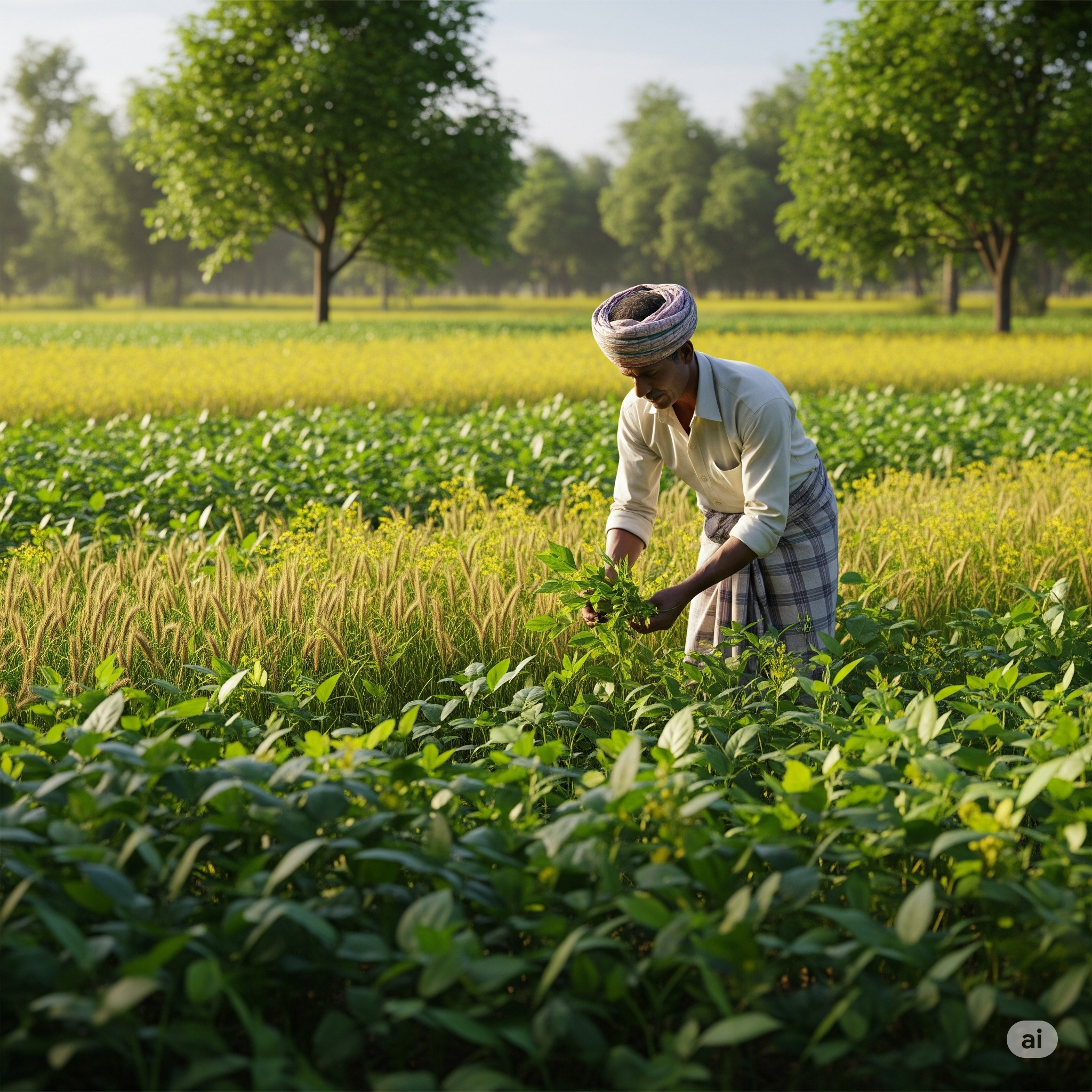India is standing at a critical crossroads in its agricultural journey. With degrading soils, climate shocks, and farmer distress growing by the year, the country needs a sustainable solution that goes beyond conventional input-intensive methods. Enter regenerative agriculture — a holistic approach that restores natural ecosystems, enhances soil health, and creates resilient livelihoods.
This blog explores how regenerative practices are taking root in Indian villages and agrarian policies, becoming a promising pathway for food security, economic empowerment, and environmental healing.
What Is Regenerative Agriculture?
Unlike traditional or even organic farming, regenerative agriculture goes a step further — it not only sustains but restores ecosystems. Key techniques include:
- Minimal or zero tillage to protect soil structure
- Cover cropping to prevent erosion and increase organic matter
- Crop rotation and intercropping for biodiversity
- Compost and natural manures instead of chemical fertilisers
- Agroforestry and integration of livestock to close nutrient loops
These methods enhance carbon sequestration, improve water retention, and rebuild topsoil — all while maintaining or increasing crop yields.
Why India Needs Regenerative Farming
1. Soil Degradation is Alarming
Over 30% of India’s soil is degraded due to overuse of fertilisers, monocropping, and deep ploughing. Regenerative agriculture offers a way to heal this damage naturally.
2. Climate Vulnerability Is Rising
From erratic rainfall to extreme heat, climate change is disrupting agriculture. Regenerative systems create climate-resilient farms with stronger water cycles, cooler microclimates, and biodiversity buffers.
3. Farmer Livelihoods Are at Risk
With rising input costs and unstable market prices, Indian farmers are in crisis. Regenerative models like Natural Farming and Zero Budget Natural Farming (ZBNF) reduce dependence on costly inputs and increase profit margins.
On-Ground Examples of Regenerative Success

a. Andhra Pradesh Community Managed Natural Farming (APCNF)
One of the largest state-led regenerative programs, APCNF has reached over 7 lakh farmers in Andhra Pradesh. Results include improved soil fertility, 30% water savings, and better pest resistance.
b. Punjab’s Agroecology Pilots
In a region notorious for chemical-heavy monocultures, experiments with crop diversification and agroforestry are showing early promise in reducing stubble burning and groundwater depletion.
c. Tribal Odisha and Agroforestry
In Koraput and Kandhamal, tribal farmers are combining millet cultivation with native tree species, enhancing food security and carbon sinks.
Regenerative vs Conventional: A Comparative Lens
| Aspect | Conventional Farming | Regenerative Agriculture |
|---|---|---|
| Inputs | High chemicals | Natural/low inputs |
| Soil health | Depleting | Improving |
| Water use | High | Efficient |
| Yield sustainability | Declining | Stable or rising |
| Carbon emissions | High | Carbon sequestration |
Government and Policy Push
- Bhartiya Prakritik Krishi Padhati (BPKP): Promotes natural farming in India under Paramparagat Krishi Vikas Yojana (PKVY).
- NITI Aayog Reports: Endorses ZBNF and agroecological approaches as scalable models.
- Budget 2023-24: Allocated funds for cow-based farming and bio-input production.
While promising, experts argue that wider policy support, procurement mechanisms, and extension services are needed to scale regenerative practices.
Challenges in Scaling
- Lack of awareness and training among farmers
- Limited access to organic inputs and tools
- Market linkages for chemical-free produce are still weak
- Short-term yield dips can deter marginal farmers
The Climate Angle
Regenerative farming could become India’s biggest climate mitigation tool. According to the Rodale Institute, global adoption of regenerative practices can sequester over 100% of current CO2 emissions.
India, being highly agrarian, holds immense potential to contribute to global targets while improving rural incomes.
The Way Forward
- Farmer Field Schools to scale capacity-building
- Public procurement of regenerative produce for mid-day meals
- Digital platforms for knowledge sharing and input access
- Carbon credits and climate finance to reward eco-restoration
- State-level regenerative agriculture missions similar to Andhra Pradesh
Conclusion
Regenerative agriculture is not just a buzzword — it’s an ancient wisdom rediscovered for modern resilience. As India navigates a warming planet, shrinking resources, and rural distress, it must embrace regenerative practices at scale. The future of Indian farming, climate action, and food sovereignty may well lie in the roots of living soil.









+ There are no comments
Add yours